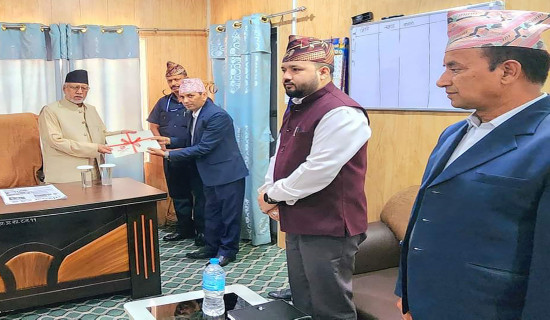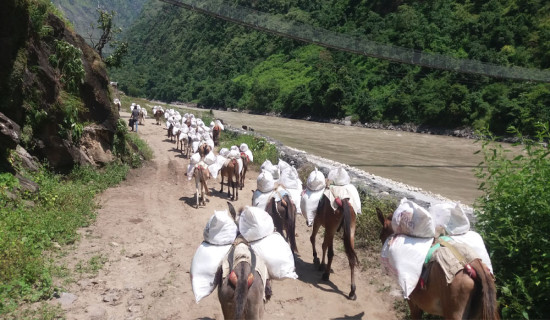- Sunday, 5 May 2024
Earthquake Awareness
April 25 is etched in the national psyche of Nepal. The day marks the anniversary of the catastrophic 2015 earthquake that killed nearly 10,000 people and left just shy of a million buildings, many of which included historical and cultural landmarks recognised as UNESCO world heritage sites, damaged or destroyed. A country with a long history of earthquakes because it sits above the tectonic fault lines, Nepal is well acquainted with the natural disaster and the resulting losses of lives and properties. The 7.6-magnitude quake that violently jolted the nation in 1934 is said to have resulted in the loss of 16,875 lives and 318,000 houses. Since then, we have been hit by a staggering number of major quakes.
Addressing a photo exhibition programme organised by the Department of Mines and Geology in Kathmandu to commemorate the 2015 earthquake, Damodar Bhandari, Minister for Industry, Commerce and Supplies, has stressed the need to generate public awareness about earthquake and disaster risk in Nepal. When it comes to dealing with earthquakes, we have a lot to learn from Japan and Taiwan, for example. On April 3 this year, Taiwan was rattled by the 7.4M quake, the most powerful one to hit the island nation in 25 years. But the toll was relatively contained, thanks to widespread public awareness campaigns and stricter building standards. Only 12 people died.
In sharp contrast, however, the moderately strong 6.4M quake that tore across the districts of Jajarkot and West on the night of Nov. 3 last year left over 150 people killed and thousands of structures damaged or destroyed. Dozens more suffered or died – especially the vulnerable like the elderly, infirm, expectant mothers, and babies – in the aftermath due to cold, malnutrition and lack of necessities like medicines and good hygiene. The unfathomable suffering was indeed heart wrenching, highlighting how inadequately, if at all, unprepared we are to manage the impacts if the big one unleashes its terror. It also underscored that we haven't learnt enough of our lessons from the 2015 quake whose fresh memory still continues to haunt us.
Impossible to predict when or where they will strike, earthquakes hit without warning. We cannot do anything about it. What we can do, however, is to stay prepared, which is indispensable to effectively deal with the impacts in their wake. Not only does enough preparation mitigates the risks and impacts, it is also crucial to manage the situation in the aftermath and save many lives from harm. One way to do this is adhering to building codes. The codes put in place by the government are said to be up to the mark to prevent building from collapsing in the event of a quake, among many other measures.
The problem, however, lies in their enforcement. This is evidenced by the fact that most of the so-called earthquake-resilient houses in Bajhang sustained major damages when an earthquake preceding the one on Nov. 3 by a few months hit the district. One study subsequently conducted showed that the damaged building had flouted the codes as they were being erected. The importance of mandatorily complying with the code cannot be overstated. To handle such calamities with finesse, widespread public awareness doesn't suffices; the government must also ensure that all structures respect the seismic codes as they are built.
















